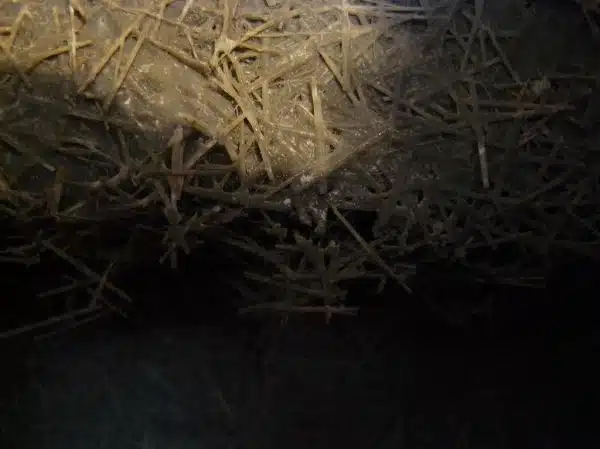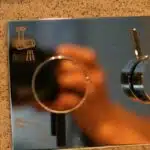Fiberglass showers are a common feature in modern bathrooms due to their durability, ease of maintenance, and affordability. However, over time they may develop cracks, scratches, or discoloration that can detract from their aesthetic appeal and functionality. Repairing a fiberglass shower may seem like a daunting task for many homeowners, but with the right tools and techniques, it can be accomplished efficiently and effectively.
As a seasoned fiberglass shower repair expert, I have witnessed firsthand the frustration that comes with having a damaged shower. Whether caused by accidental impacts or regular wear and tear, these issues can affect the overall quality of your bathroom experience and undermine your sense of comfort and cleanliness. In this article, I will share some valuable insights on how to repair a fiberglass shower without breaking the bank or calling in professional help. From identifying the source of the damage to selecting the appropriate materials and applying them correctly, you will learn step-by-step instructions on how to restore your fiberglass shower to its pristine condition and enjoy it for years to come.
Assessing The Damage
A fiberglass shower is a popular choice for many homeowners due to its durability and low maintenance. However, accidents and regular use can cause damage to this type of shower, leaving unsightly cracks, chips, or holes. Assessing the damage is the first step in repairing your fiberglass shower.
Before you begin any repair work, it’s important to determine the extent of the damage. This will allow you to estimate repair costs and decide whether you want to attempt a DIY fix or seek professional help. Minor damage, such as small cracks or chips, can typically be repaired with a DIY kit that includes all necessary materials. However, if the damage is extensive or affects multiple areas of your shower, hiring a professional may be more cost-effective in the long run.
If you’re unsure whether you should tackle the repair yourself or hire a pro, consider your skill level and available time. DIY repairs can save money upfront but may result in additional costs if not done correctly. On the other hand, hiring a professional ensures that the job is done right but comes with higher upfront costs. Ultimately, it’s up to you to decide which option best suits your needs and budget while keeping in mind that safety should always come first when working with fiberglass materials.
Assessing the damage is crucial before taking any further steps towards repairing your fiberglass shower. Once you’ve determined what needs fixing and how much it will cost, it’s time to gather the necessary tools and materials for the repair process.
Gathering The Necessary Tools And Materials
After assessing the damage, the next step is to gather the necessary tools and materials for repairing a fiberglass shower. One of the most important things you need to consider when repairing a fiberglass shower is choosing the right resin. Resin is an essential component of fiberglass repair, which acts as a bonding agent that holds the fibers together.
When it comes to selecting the right resin for your fiberglass shower repair, there are two main types of resins you can choose from: polyester and epoxy. Polyester resin is less expensive than epoxy resin and sets up quickly, but it tends to shrink and crack over time. On the other hand, epoxy resin is more expensive but stronger and more durable than polyester resin. It also has better waterproofing capabilities and doesn’t shrink or crack like polyester.
Once you have chosen the right resin for your fiberglass shower repair, you can start looking for fiberglass repair kits that contain everything you need to fix your shower. These kits typically include a variety of tools such as sandpaper, putty knife, mixing cups, and gloves, as well as all the necessary materials like resin, hardener, and fiberglass cloth or matting. Finding these kits should not be difficult since they are widely available in hardware stores or online shops. In the next section, we will discuss how to prepare your work area before starting with fiberglass shower repair.
Preparing The Work Area
Before starting to repair a fiberglass shower, it is essential to prepare the work area adequately. Preparing the work area involves ensuring that you have all the necessary protective equipment and getting the surfaces ready for repair.
Protective equipment is crucial when working with fiberglass because it can cause skin irritation and respiratory problems. It is recommended that you wear gloves, a respirator, safety goggles or glasses, and long-sleeved clothing during repairs. This protective gear will protect you from inhaling the fine fiberglass particles or getting them on your skin.
Preparing surfaces involves removing any loose or damaged fiberglass layers and cleaning the surface thoroughly. To accomplish this task, follow these three steps:
- Use sandpaper to smooth out any rough areas around the cracks or holes in the fiberglass.
- Clean the surface of the shower with soap and water to remove any dirt or grime around the repair area.
- Wipe down the area with rubbing alcohol to ensure that it is completely clean before applying new fiberglass.
By preparing your work area correctly, you can ensure that your repair job goes smoothly without any mishaps. Next, we will discuss how to remove loose or damaged fiberglass in preparation for repairing your shower effectively.
Removing Loose Or Damaged Fiberglass
After preparing the work area, it is time to remove loose or damaged fiberglass from your shower. This step is crucial because any remaining damaged fiberglass can compromise the repair process. There are two primary techniques for removing fiberglass: cutting and sanding.
Cutting involves using a utility knife or rotary tool to cut through the damaged fiberglass until you reach a solid surface. This technique is ideal for large areas of damage or those that are difficult to sand. However, cutting requires a steady hand and some experience with power tools.
Sanding is the most common technique for removing small areas of damage or rough edges. You can use an orbital sander with fine-grit sandpaper to smooth out rough spots and create a clean surface for the repair material. When sanding, make sure to wear protective gear such as gloves, goggles, and a respirator mask to avoid inhaling harmful dust particles.
Transitioning into the subsequent section about ‘sanding the surface’: With the damaged fiberglass removed, it’s time to move on to sanding the surface in preparation for the repair material.
Sanding The Surface
To properly repair a fiberglass shower, sanding the surface is an essential step. Before beginning, it’s important to understand the difference between wet and dry sanding. Wet sanding involves using water or a lubricant to reduce friction and prevent the sandpaper from clogging. Dry sanding is done without any added moisture.
When choosing the appropriate grit of sandpaper, consider the severity of damage to your shower’s surface. Coarse grits are ideal for removing deep scratches and stains, while finer grits are better suited for smoothing out minor imperfections. It’s recommended to start with a coarse grit and work your way up to a finer grit for optimal results.
Whether you choose wet or dry sanding, it’s crucial to take your time and work methodically over the entire surface of the shower. Once you’ve completed this step, move on to cleaning the area before moving onto repairs. By following these steps carefully, you can effectively restore your fiberglass shower to its original condition and enjoy years of use without any issues.
Cleaning The Area
As you prepare to clean the area of your fiberglass shower, it is important to choose the right cleaners. Avoid any harsh chemicals that can damage the surface of your shower. Instead, opt for mild solutions that are gentle on fiberglass. Look for products specifically designed for cleaning fiberglass surfaces.
When cleaning your shower, make sure to avoid abrasive tools that can scratch or damage the fiberglass. Instead, use a soft cloth or sponge and gently scrub away any dirt or grime. For tough stains, you may need to use a non-abrasive scouring pad.
Regular cleaning is essential for maintaining the appearance and integrity of your fiberglass shower. By choosing the right cleaners and avoiding abrasive tools, you can keep your shower looking new for years to come. Once you have thoroughly cleaned the area, you will be ready to move on to applying the fiberglass resin in the next section.
Applying The Fiberglass Resin
To repair a fiberglass shower, one must first gather the necessary materials, including fiberglass resin, a mixing bucket, a stirring stick, and a disposable brush or roller.
Once all of the materials are ready, the fiberglass resin mixture should be prepared by combining the resin and the hardener in the mixing bucket according to the manufacturer’s instructions.
The mixture should be stirred thoroughly to ensure the resin and hardener are fully combined and the consistency is that of a thick syrup.
The mixed resin should then be applied to the shower base with the brush or roller.
Gathering Materials
When it comes to repairing a fiberglass shower, gathering the necessary materials is crucial to achieving a successful outcome. Cost estimation and time management are important factors to consider when putting together the list of required items. As an expert in fiberglass shower repair, I recommend taking inventory of what you already have on hand before purchasing anything new.
First and foremost, you will need fiberglass resin, which is readily available at most hardware stores. It’s important to choose a high-quality resin that will provide long-lasting durability. Additionally, you’ll need a hardener to mix with the resin, as well as sandpaper for smoothing out any rough spots. Depending on the extent of damage to your shower, you may also require cloth or matting material to reinforce the repair.
Other necessary tools include a putty knife for applying the mixture and gloves to protect your hands from the chemicals in the resin. Cost estimation can vary depending on the size of your shower and extent of damage, but typically this type of repair can be done for under $100. Time management is also important to consider; allowing yourself ample time for preparation and application will ensure that your repair is effective and long-lasting.
In conclusion, gathering materials is an essential step in repairing a fiberglass shower. As an expert in this field, I recommend taking cost estimation and time management into consideration when creating your shopping list. By choosing quality materials and properly preparing for the task at hand, you can achieve a durable repair that will save you money in the long run.
Mixing Resin
Mixing the resin is a crucial step in repairing a fiberglass shower, as it determines the strength and durability of the repair. There are several mixing techniques that can be employed depending on the type of resin being used. It is important to follow the manufacturer’s instructions carefully and mix only the amount required for each application.
When applying the fiberglass resin, it is important to use proper technique to ensure even coverage and adhesion. One tip is to apply the mixture in thin layers, allowing each layer to dry before applying another. This will prevent air pockets from forming and ensure that the repair is strong and long-lasting. Additionally, it is important to use a putty knife or similar tool to spread the mixture evenly over the damaged area, taking care not to leave any gaps or uneven spots.
In conclusion, mixing resin and applying it properly are critical steps in repairing a fiberglass shower. As an expert in this field, I recommend taking time to carefully mix your materials and apply them with precision for optimal results. By following these tips, you can achieve a strong and durable repair that will save you money in the long run while ensuring safety for all who use your shower.
Reinforcing With Fiberglass Cloth
When repairing a fiberglass shower, you can reinforce the weakened area using fiberglass cloth. This material is an excellent choice because it’s strong, durable, and lightweight. It’s also flexible, so it can easily conform to the shape of your shower. You’ll need to cut the fiberglass cloth to the size you need for your repair project.
Fiberglass cloth alternatives are available, but they don’t provide the same benefits as using fiberglass cloth. For example, some people use epoxy putty or body filler as an alternative. However, both of these materials are heavy and may cause additional stress on your shower’s structure over time. They may also shrink or crack over time if not applied correctly.
The benefits of using fiberglass cloth for reinforcing your shower are numerous. Not only is it easy to work with, but it also strengthens the area where it’s applied. Additionally, when used in conjunction with resin, it becomes waterproof and resistant to damage from chemicals and heat. By adding a few layers of fiberglass cloth to your repair project, you’ll be able to restore your shower’s structural integrity quickly and efficiently.
To apply additional layers of resin after reinforcing with fiberglass cloth, you’ll need to follow specific steps carefully. First, allow the initial layer of resin and fiberglass cloth to cure completely before applying another layer. Next, sand the first layer lightly before applying a second layer of resin and fiberglass cloth. Repeat this process until you’ve added enough layers for your specific needs. The result will be a sturdy and durable repair that will last for years to come!
Applying Additional Layers Of Resin
After reinforcing your fiberglass shower with fiberglass cloth, the next step is to apply additional layers of resin. This process will help create a smooth and durable surface that will withstand daily wear and tear. Before diving into this step, it’s important to note some common mistakes and recommended techniques to ensure a successful repair.
One common mistake is applying too much resin at once. This can lead to sagging or dripping, resulting in an uneven surface. To avoid this, apply thin layers of resin at a time, allowing each layer to dry before applying another. Another mistake is not properly mixing the resin and hardener, which can result in the surface remaining tacky or soft. To ensure proper mixing, use a clean container and mix thoroughly for at least two minutes.
To guide you through the process of applying additional layers of resin, refer to the table below:
| Step | Description | Tips |
|---|---|---|
| 1 | Sand the surface lightly with fine-grit sandpaper | Use a circular motion and wipe away any dust with a damp cloth |
| 2 | Mix resin and hardener according to instructions | Use a clean container and mix thoroughly |
| 3 | Apply thin layer of resin with brush or roller | Work from top to bottom in small sections |
| 4 | Allow layer to dry completely before applying another | Follow manufacturer’s instructions for drying time |
By following these steps and tips, you’ll be able to successfully apply additional layers of resin to reinforce your fiberglass shower. Once complete, you can move on to sanding and shaping the surface for a smooth finish.
Sanding And Shaping The Surface
Once the fiberglass shower has been cleaned and prepped, it is time to sand and shape the surface. Sanding is essential to remove any bumps or unevenness on the surface of the shower. This process involves using a fine-grit sandpaper to smooth out the surface of the shower. The aim is to create a rough surface that will allow for better adherence of primer and paint.
Before you start sanding, ensure that you have all necessary protective gear such as goggles, gloves, and a dust mask. Then, begin by wetting the shower with clean water to prevent dust from rising during sanding. Use circular motions when sanding as this helps to smoothen out any bumps or ridges on the surface of your fiberglass shower.
Once you are done with sanding, use a damp cloth to wipe down any dust or debris from your fiberglass shower’s surface. Afterward, apply primer evenly across your shower’s surface using a paintbrush or roller brush. Primer helps to fill in any small cracks or holes on the shower’s surface while also providing an even base for paint application later on.
Now that we have applied primer, it’s time to focus on smoothing out bumps that may still be present on your fiberglass shower’s surface. Using fine-grit sandpaper again, carefully go over any areas where you can still feel bumps. Ensure that you don’t oversand as this may lead to further damage of your fiberglass material. Finally, wipe down your fiberglass shower’s surface once more before proceeding onto cleaning and polishing it for a pristine finish.
Cleaning And Polishing The Shower
- Rust can be removed from a fiberglass shower by using a specially formulated rust remover, or by sanding the affected area with fine-grit sandpaper.
- Mold and mildew can be removed from a fiberglass shower using a combination of bleach and water mixed at a 1:1 ratio.
- The surface of a fiberglass shower can be polished by using a polishing compound and a clean cloth, buffing the surface in a circular motion.
- A rust remover should be applied to the fiberglass shower with a sponge or cloth and left on for the amount of time specified on the product label.
- Mold and mildew can be scrubbed from a fiberglass shower using a nylon scrubber and the bleach and water solution.
- To achieve a high gloss finish on a fiberglass shower, use a polishing compound with a higher grit than the compound used for the initial polishing.
Removing Rust
Preventing rust in fiberglass showers is essential for their longevity and aesthetic appeal. Rust can cause discoloration, cracks, and leaks, which can be expensive to repair. To prevent rust from forming in your shower, it is important to keep it dry after each use. Moisture is a breeding ground for rust and other types of corrosion. Additionally, using a shower mat or rug can help prevent scratches and other types of damage that can lead to rust formation.
If rust has already formed in your fiberglass shower, there are several techniques you can use to remove it effectively. One popular method is using vinegar and baking soda. Mix equal parts of the two ingredients into a paste and apply it directly onto the affected area. Let it sit for about 30 minutes before scrubbing with a non-abrasive sponge or brush. Rinse thoroughly with water afterward.
Another effective technique for removing rust from fiberglass showers is using lemon juice and salt. Mix the two ingredients into a paste and apply it directly onto the affected area. Let it sit for about 30 minutes before scrubbing gently with a non-abrasive sponge or brush. Rinse thoroughly with water afterward.
In conclusion, preventing rust from forming in your fiberglass shower is crucial for its upkeep and longevity. If rust has already formed, however, there are various methods you can use to remove it effectively without causing further damage to your shower’s surface. Utilizing these techniques regularly will ensure that your fiberglass shower remains clean and free of any unwanted rust stains or corrosion marks.
Cleaning Mold
Proper cleaning and polishing of your fiberglass shower is crucial to maintain its aesthetic appeal and longevity. Mold growth can be a common issue in showers due to the constant presence of moisture, which creates an ideal breeding ground for mold spores. It’s important to clean mold as soon as it appears to prevent it from spreading and causing further damage to your shower’s surface.
To effectively clean mold from your fiberglass shower, start by using a natural cleaning solution such as vinegar or hydrogen peroxide. Apply the solution directly onto the affected area and let it sit for several minutes before scrubbing gently with a non-abrasive sponge or brush. Rinse thoroughly with water afterward. This will help prevent reoccurrence of mold growth in your shower.
Preventing reoccurrence of mold growth can also be achieved by ensuring that your shower is properly ventilated after each use. Keep windows open or run an exhaust fan to allow air circulation, which helps reduce moisture buildup. Additionally, regularly wiping down your shower walls and floor with a squeegee or towel can help remove excess water and prevent mold growth. By using natural cleaning solutions and taking preventative measures, you can keep your fiberglass shower clean and free of unwanted mold stains.
Polishing Surface
To maintain the aesthetic appeal and longevity of your fiberglass shower, it’s essential to clean and polish its surface regularly. Polishing the surface of your shower not only enhances its appearance but also helps protect it from damage caused by everyday wear and tear. Choosing the right polish is crucial to achieve a smooth and shiny finish without damaging the fiberglass material.
When choosing a polish for your fiberglass shower, it’s important to avoid abrasive cleaners or those containing harsh chemicals that can scratch or discolor the surface. Instead, opt for a non-abrasive formula specifically designed for use on fiberglass surfaces. Apply a small amount of polish onto a soft cloth and work in circular motions over the entire surface of your shower, paying extra attention to areas with stains or discoloration.
One common mistake to avoid when polishing your fiberglass shower is using too much pressure or scrubbing too vigorously. This can cause scratches or damage to the surface, making it more susceptible to mold growth and other forms of deterioration. Remember to apply gentle pressure when polishing and use a soft cloth or sponge instead of abrasive scrubbers. By following these tips, you can keep your fiberglass shower looking like new for years to come.
Maintaining The Repaired Area
Just like any other repair work, maintaining the repaired area of a fiberglass shower is just as important. Think of it as tending to a garden bed after planting new flowers. You wouldn’t want weeds to grow and ruin your hard work, would you? In the same way, regular upkeep of your newly repaired fiberglass shower will help prevent future damage.
Preventing discoloration is one of the key steps in maintaining a repaired fiberglass shower. Discoloration can occur due to exposure to sunlight or even the minerals present in water. To avoid this, apply a UV-resistant gel coat over the repaired area. This will help protect against fading and keep your shower looking new for longer.
In addition to preventing discoloration, avoiding harsh cleaners is equally crucial. Abrasive cleaners can scratch and damage the surface of your fiberglass shower, leading to more repair work down the line. Instead, opt for gentle cleaning solutions that are specifically designed for use on fiberglass surfaces. By following these simple maintenance tips, you can ensure that your newly repaired fiberglass shower remains in top condition for years to come.
To prevent future damage from occurring, it’s important to take proactive measures such as installing a shower liner or mat to reduce wear and tear on the surface of the shower floor. Additionally, consider using a squeegee or towel after each use to dry off any excess moisture left behind. By taking these preventive steps and regularly maintaining your fiberglass shower, you can extend its lifespan and avoid costly repairs in the future.
Preventing Future Damage
Maintaining the repaired area is crucial to ensure that your fiberglass shower remains in excellent condition. After repairing a crack or hole, it’s essential to keep an eye on the affected area for signs of damage. Inspect the repaired section regularly, especially after using harsh cleaning agents or abrasive tools. If you notice any cracks or chips forming, address them immediately before they worsen.
Preventive measures can go a long way in maintaining your fiberglass shower’s condition and preventing future damage. Avoid using harsh cleaning agents that contain ammonia or bleach as they can cause discoloration and weaken the material. Instead, opt for mild cleaning solutions specifically designed for fiberglass surfaces. Additionally, avoid placing heavy objects on the shower floor as this can cause cracks and scratches over time.
Common mistakes made during fiberglass shower repairs include failing to properly prepare the surface before applying resin and not allowing enough time for the resin to cure fully. Ensure that you follow all instructions carefully and take your time during the repair process to avoid making these mistakes. By taking preventive measures and avoiding common mistakes, you can prolong your fiberglass shower’s lifespan and prevent costly repairs in the future.
- Regularly inspect the repaired area to identify any signs of damage
- Use mild cleaning solutions specifically designed for fiberglass surfaces
- Avoid placing heavy objects on the shower floor
As important as it is to learn how to repair a fiberglass shower, understanding how to prevent future damage is equally vital. However, even with proper maintenance, issues may arise from time to time that require troubleshooting. The next section will cover common problems that may occur with fiberglass showers and how to fix them effectively.
Troubleshooting Common Issues
Like any other fixture or appliance in your home, fiberglass showers can experience common issues such as cracks and discoloration. While these may seem like minor issues, they can worsen over time if not addressed properly. Repairing cracks in fiberglass showers is essential to prevent water from seeping through the walls or floors and causing further damage. Dealing with discoloration, on the other hand, is primarily an aesthetic issue that can make your shower look unattractive.
Repairing cracks in fiberglass showers can be done by applying an epoxy resin mixture to the affected area. This mixture will fill in the crack and harden to create a strong bond that will prevent water from penetrating through. The first step is to clean the area around the crack thoroughly using soap and water or rubbing alcohol. Once dry, apply the epoxy mixture evenly over the crack using a putty knife and allow it to dry completely before sanding down any excess material.
Discoloration is a common issue that occurs when fiberglass showers are exposed to harsh chemicals or minerals found in hard water. To deal with this issue, mix equal parts of baking soda and hydrogen peroxide into a paste and apply it to the discolored areas using a soft-bristled brush. Allow it to sit for 30 minutes before rinsing off with warm water. If this method does not work, you may need to use a commercial cleaner specifically designed for fiberglass showers.
Seeking professional help when necessary is essential for more complex repairs or if you are unsure of how to proceed. A professional repair service will have the expertise and equipment needed to fix any issues with your fiberglass shower effectively. Additionally, they can provide advice on how best to maintain your shower so that it lasts longer and remains looking new for years to come. Remember that early intervention is key when dealing with any issues with your shower as it can save you time, money, and hassle in the long run.
Seeking Professional Help When Necessary
Hiring professionals to repair a fiberglass shower is a wise decision if the damage is extensive or requires special tools and techniques. While DIY repairs may seem like a cost-effective option, they can lead to more significant problems in the long run. A professional repairman has years of experience and knowledge in repairing fiberglass showers, ensuring that the job is done correctly and efficiently.
One significant advantage of hiring professionals is their expertise in assessing the problem accurately. Fiberglass showers can have underlying issues that are not immediately visible, such as water leaks or structural damage. Professional repairmen have the necessary tools and skills to identify these hidden issues and provide a comprehensive solution. Attempting DIY repairs without proper knowledge or equipment can exacerbate these underlying problems, causing further damage.
DIY vs. professional repairs ultimately come down to one’s skill level and experience with fiberglass shower repairs. While DIY repairs may work for minor damages, such as small cracks or scratches, larger problems require professional assistance. It’s essential to consider the risks involved in attempting DIY repairs, which can lead to more expensive repairs if not done correctly. Hiring professionals ensures that the job is done right the first time, saving homeowners both time and money.
Hiring professionals for fiberglass shower repair ensures quality results while also providing peace of mind to homeowners. Professional repairmen use high-quality materials and specialized techniques to ensure that the repaired area blends seamlessly with surrounding walls and surfaces. Additionally, licensed professionals offer warranties on their workmanship, giving homeowners added protection against future damages or issues. By investing in professional services, homeowners can rest assured that their fiberglass shower will be repaired safely and effectively without any further complications.
Conclusion
In conclusion, repairing a fiberglass shower can be a daunting task, but with the proper tools and materials, it can be done successfully. Assessing the damage is crucial before starting any repairs to ensure that the correct approach is taken. Preparing the work area and removing loose or damaged fiberglass are essential steps in the process.
Sanding the surface and maintaining the repaired area will help prevent future damage. It is also important to troubleshoot common issues during the repair process and seek professional help when necessary. Remember to take preventative measures to keep your fiberglass shower in good condition for years to come. With patience and attention to detail, anyone can become an expert at repairing a fiberglass shower.
Image Credits
- “Fiberglass Shower” by darktek13 (featured)





























